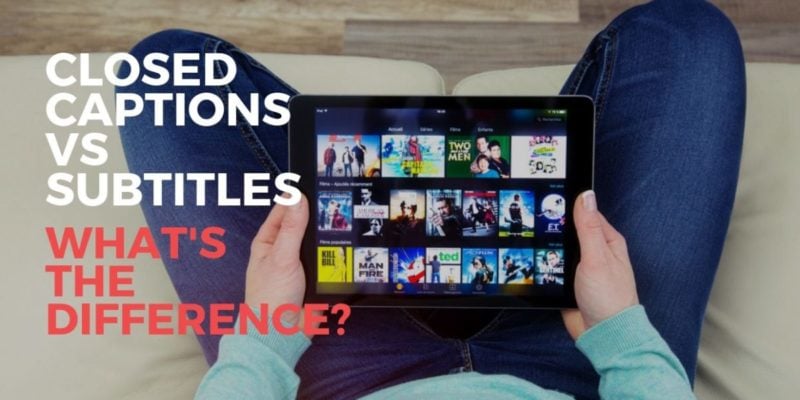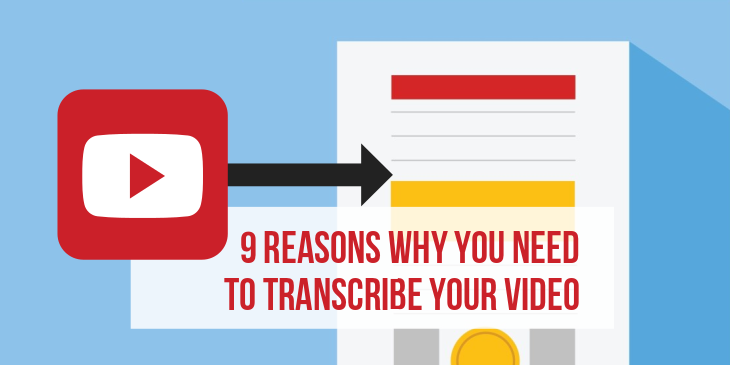The primary and shared objective of subtitles and captions is to expand your outreach. If you include video subtitles and captions to your video content, it enables the audience with hearing impairment or whose native languages differ from the one in the video, to fully understand your content. This directly translates to reaching a wider audience. There are more than 28 million hearing-impaired people in America. By adding subtitles and captions you are able to communicate more efficiently with that audience.
For example, foreign language films that incorporate subtitles in various languages have had a global breakthrough into markets that would normally restrict them to their original language base. Were it not for the subtitles, those films would have a bigger challenge in reaching international markets. Just take the example from the Japanese animated film Spirited Away. After its success in Japan, it was re-released with subtitles and became (at the time) the highest grossing film worldwide with $350 million and won the Academy Award for Best Animated Feature at the 75th Academy Awards.
How are captions and subtitles different?
Subtitles and captions differ in various ways. Although both of them are texts that appear on screens, they contrast in their definitions and intended purposes.
Let’s discuss those differences:
1. Definitions
In simple terms, closed or open captions (you can turn off closed captions, but you can’t turn off open captions) refer to the transcribed dialogues into text versions, and on the other hand, subtitles are translations of audio from one language to others in text form. That means captions come in the same language as the audio while subtitles come in different languages.
2. Purposes
Captions are legal provisions intended for audiences with hearing impairment to more correctly understand dialogues, background sounds, and music. The WCAG 2.0, FCC’s CVAA, and ADA, all call for multimedia to incorporate captions. Those legal requirements are applied throughout education, entertainment, business, and government as well to ensure that the disabled are not discriminated.
Both captions (closed and open) differ from subtitles since their design is purposefully for ensuring the audience understands all the necessary audios in a video; not only the speech. There exist non-speech sounds which are vital to ensuring that the video is understood clearly, and therefore, they are essential components of good captions. They include laughing, sighing, barking, among others and typically, they appear in enclosed brackets.
On the contrary, subtitle’s fundamental purpose is the translation of speech into the audience’s native language without necessarily incorporating those non-speech sounds. Basically, subtitling is not suitable to the hearing impaired because they do not provide for such non-speech sounds which are essential to ensure that they have similar video viewing experience.
Apart from ensuring accessibility, captioning is applied for several other purposes. First, they enable the audience to follow up on a story even when the speech and different sounds cannot be heard due to noisy surroundings like market places, or sound-sensitive environments like hospitals. Secondly, videos with mute default settings (like those on social networks’ news feed), enable users to understand those videos without sound.
Subtitles were created for audiences whose native language differ from the one in the video’s speech or simply don’t understand the language. With globalization, the use of subtitles has increased whereby the majority of video producers see the value associated with availing content in multiple languages.
More marketing ideas: Content upgrades to grow your email list
Caption and subtitles the difference in a nutshell
Captions
- Assumes the audience can’t hear
- Incorporates speech and non-speech sounds
- Designed for the hard to hear or deaf audience
- Normally included after the release of a TV show or film
- All audio and dialogue appears in a text version
Subtitles
- Assumes the audience can hear
- Incorporates speech only
- Languages appear in text form
- Developed before the release of a TV show or film
- Designed for those who don’t speak the same language as the one used in the video
Why do you need to invest in captions and subtitles?
They are priceless tools that provide:
- Broader audience outreach
- Retention of video content
- Audience engagement
- Enhancement in the discovery of the video content
- Search engine optimization
A primary business goal is to reach a wider audience . The availability of video captions enables you to enlist new viewers into your current audience who would otherwise not understand your video content due to hearing inabilities. You now include, viewers with difficulties in processing speech or auditory elements in a video and also those billions of people don’t speak the language used.
More marketing ideas: Different types of lead magnets you should be using for your business
Subtitles go a step further to open up your video content to the global audience. 80% of YouTube viewers are from outside the United States. Therefore, if you can reach a market of the over two billion non-English speakers who are available online, then your video’s return on investment is better. That is how the entertainment industry (films and TV shows) benefit and profit from the use of subtitles and captions.
Captions and subtitles also help to improve your audience engagement and viewing experience. Captioned videos gunner 40% boost in views, while those containing both subtitles and captions gain 80% more viewers. More so, Facebook’s internal investigations found that there was a 12% improvement in engagement for video adverts with captions. 85% of Facebook videos are viewed with sounds off.
The improvement in engagement triggers another significant benefit, which is search engine optimization. Google’s bots view comments, likes, shares, retweets as an indicator of quality and useful content and therefore boost your ranking in search results.
The added text from subtitles and captions allow those bots to crawl the video content in text version, and rank the video appropriately. That helps to improve your video’s discoverability, generate more organic traffic, boost engagement as well, and eventually spur the generation of sales.
In conclusion
The differences in subtitles and captions discussed above are ideal to ensure that you use them on your videos accordingly and reap the associated benefits. Therefore, we recommend their use for the success of your video content marketing campaigns.
If your looking for software to help you transcribe your text and add subtitles and captions then go no further than Designrr‘s content repurpose tool. I not only create ebooks but also blog posts, all from various different content sources. We are also the only solution that can repurpose video and audio content into ebooks and blog posts within a few minutes.


